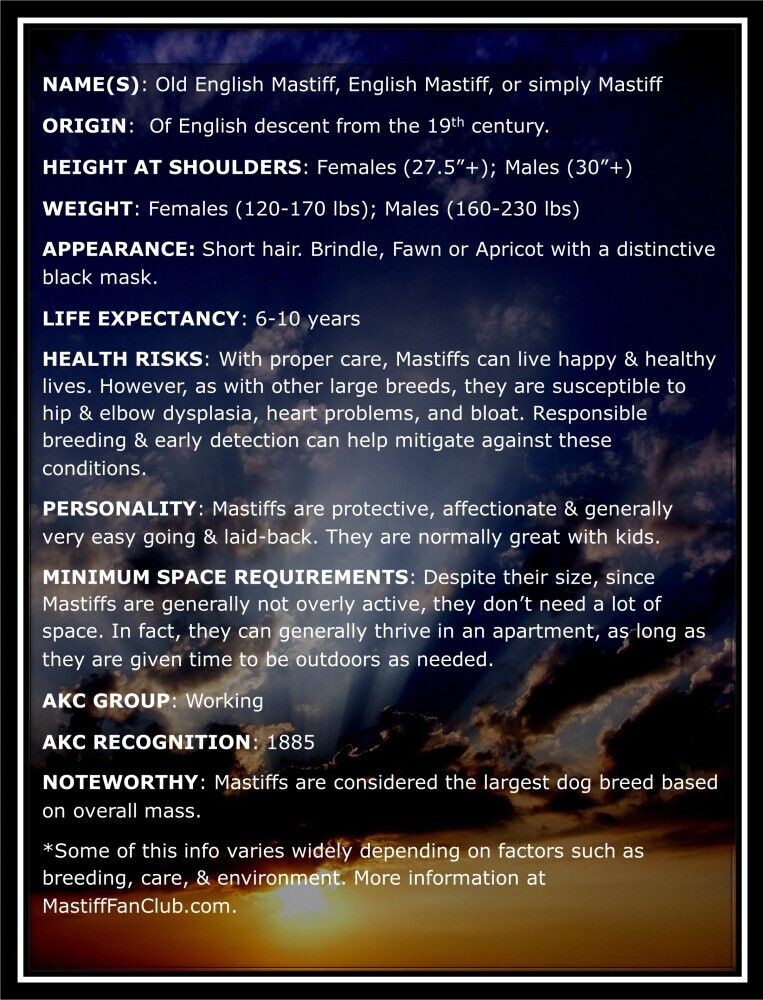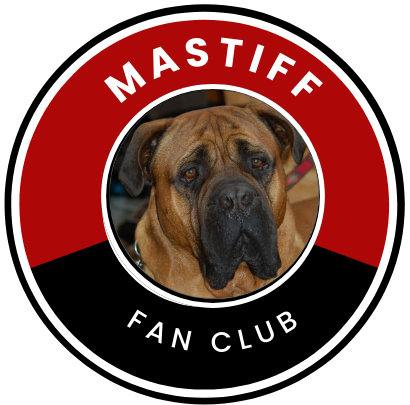
The Old English Mastiff is one of those breeds that carries centuries of history with it. Originating in England, these majestic dogs were initially used as guard dogs to protect estates and livestock. Their impressive stature and strong build meant they were perfect for the job, making them a favorite with royalty and nobility.

Known lovingly as ‘gentle giants’, these bad boys are all about heart and loyalty. Despite their giant size, they are known for a calm and laid-back demeanor, making them fantastic companions for families, especially those with kids. Their gentle nature is often surprising, given their powerful appearance.
We’re talking about dogs that can often crest over 200 pounds, with some even tipping the scales near 230. Yet, it’s not just their size that’s larger-than-life—their personalities are equally grand. With broad shoulders, hefty paws, and a massive head, they exude strength and confidence. But don’t let their imposing looks fool you. These dogs are usually more about hugs than hostility.
People tend to assume these dogs are all stern protectors, but in reality, they’re pretty soft-hearted. While they might look intimidating to strangers, you’ll often find them rolling around on the floor, begging for belly rubs with their family. This is just one of those quirks that Mastiff owners adore.
It’s essential to understand that the ‘gentle giant’ label doesn’t mean they’re pushovers—they’re quite protective when it matters. However, they often rely on their intimidating presence rather than aggression. Just their size and bark are often enough to keep unwelcome visitors at bay.
Temperament and Personality: Understanding Your Loyal Companion
Old English Mastiffs are the epitome of loyalty. Once they welcome you into their circle, you’re in for a lifetime of gentle companionship. Their easy-going nature means they get along well with everyone in the family, from toddlers to elders. It’s all about the love for these gentle souls, and trust me, there’s plenty of it to go around.
Training an Old English Mastiff can be an adventure of its own. While they’re known for being obedient, these dogs respond best to patience and positive reinforcement. A stern approach will only dampen their spirits, so my advice? Treats and praise are your best allies here!
Socialization is key when it comes to these big pups. Exposing them to different people, places, and experiences from an early age helps them grow into well-rounded adult dogs. It’s amazing how a bit of mingling here and there can turn your Mastiff into the friendly neighborhood dog that everyone’s talking about.
Interestingly, personality traits can vary between male and female Mastiffs. While the boys may showcase a bit more stubbornness, the ladies tend to be a little more sensitive. Understanding these subtle differences can be a game-changer in building a harmonious relationship with your dog.
Their temperament makes them especially great for laid-back families. While they enjoy a playful romp every now and then, Mastiffs are typically content chilling at home, preferring relaxation over running marathons. They are big fans of cozy afternoons and mellow evenings, just like the rest of us.
Caring for Your Old English Mastiff: Health and Nutrition
One of the most crucial aspects of owning an Old English Mastiff is ensuring they get the right nutrition. Given their significant size, these dogs have specific dietary needs to maintain their health. A balanced diet rich in proteins, fats, and essential nutrients keeps them in top shape. It’s important to monitor their food intake, as Mastiffs can be prone to obesity which can lead to other health issues.
Owners often find that feeding schedules are beneficial. Splitting their meals into smaller portions throughout the day can keep them from overloading their stomach, helping reduce the risk of bloat, a health condition these dogs can be susceptible to. Choose high-quality commercial or home-prepared dog food that meets all their nutritional requirements.
Health-wise, Mastiffs require regular check-ups. Their large size can make them prone to joint issues like hip dysplasia, so it’s essential to keep an eye on any signs of discomfort. Heart problems can also be a concern. Regular vet visits ensure these potential issues are caught early and managed properly.
Grooming may seem like a minor task, but it’s vital for keeping your Mastiff happy and healthy. Their short coat is fairly low maintenance, but regular brushing helps control shedding and keeps their coat shiny. Pay attention to their ears and teeth as well, since infections can crop up if they’re not cleaned regularly.
Maintaining their healthy weight is a matter of both diet and exercise. These dogs do well with a routine that includes moderate daily exercise without overexerting them. Too much rigorous activity can strain their joints, so gentle walks or playtime is the way to go.
Exercise and Activity Levels: Keeping Your Mastiff Active
While the Old English Mastiff might seem like a laid-back couch lover, they do need regular exercise to stay healthy. However, this isn’t about running them ragged. Instead, focus on activities that cater to their loving and gentle nature without pushing them too hard.
A simple daily walk around the neighborhood is often enough to keep them happy. These walks aren’t just for exercise—they provide mental stimulation and a chance to socialize too. Adding in a few meet and greets with fellow dog walkers could make their day.
Interactive toys or puzzle feeders are great ways to keep their minds sharp and engaged. Mastiffs thrive on tasks that challenge them intellectually without requiring Herculean physical efforts. A bit of brain tease goes a long way in battling boredom.
Their general energy levels might decline as they age, making it crucial to adjust activities accordingly. Younger Mastiffs may enjoy longer walks or a bit of fetch in the yard, while older ones might prefer leisurely strolls and lots of nap time. Tuning into your Mastiff’s individual pace goes a long way in ensuring they stay active and content.
Remember, this isn’t about turning them into agility champions. It’s all about maintaining a balanced routine that incorporates regular, gentle exercises tailored to their capabilities. Overdoing it can risk joint strain or fatigue, so always consider their comfort and pace.
Choosing the Right Old English Mastiff: Adoption and Ownership Guide
Bringing an Old English Mastiff into your life is a big commitment, both figuratively and literally. To find your perfect canine companion, it’s important to kick things off with the right start.
One of the most reliable ways to get your hands on a healthy Mastiff is by contacting reputable breeders. They prioritize the health and temperament of their puppies, and a good breeder will provide you with all the necessary health clearances. Ensure you visit in person to see the environment where the puppies are raised. If you’re unsure where to start, breed societies often have lists of trusted breeders.
Adoption is another fantastic option to consider. There are many Old English Mastiffs in need of a loving home, so check out local shelters or breed-specific rescues. These dogs might come with a bit of a backstory, but they’re often more than ready to shower a new family with love and loyalty.
Before you bring a Mastiff home, ask yourself some key questions: Do you have enough space for such a large dog? Are you prepared for the food and healthcare costs that come with them? Do you have time to devote to training and socializing? Honest answers to these questions will ensure you’re truly ready.
Setting up your home is another step you won’t want to overlook. A suitable space where they can comfortably lounge and play is key. Consider investing in a quality dog bed that supports their joints, along with secure fencing if you have a yard.
Owning a Mastiff is a long-term relationship. They’re not just pets; they’re family members. Taking on the responsibility of their care, from puppyhood through their senior years, requires commitment and love. But in return, you’ll gain a loyal friend who fills your life with gentle joy and companionship.

